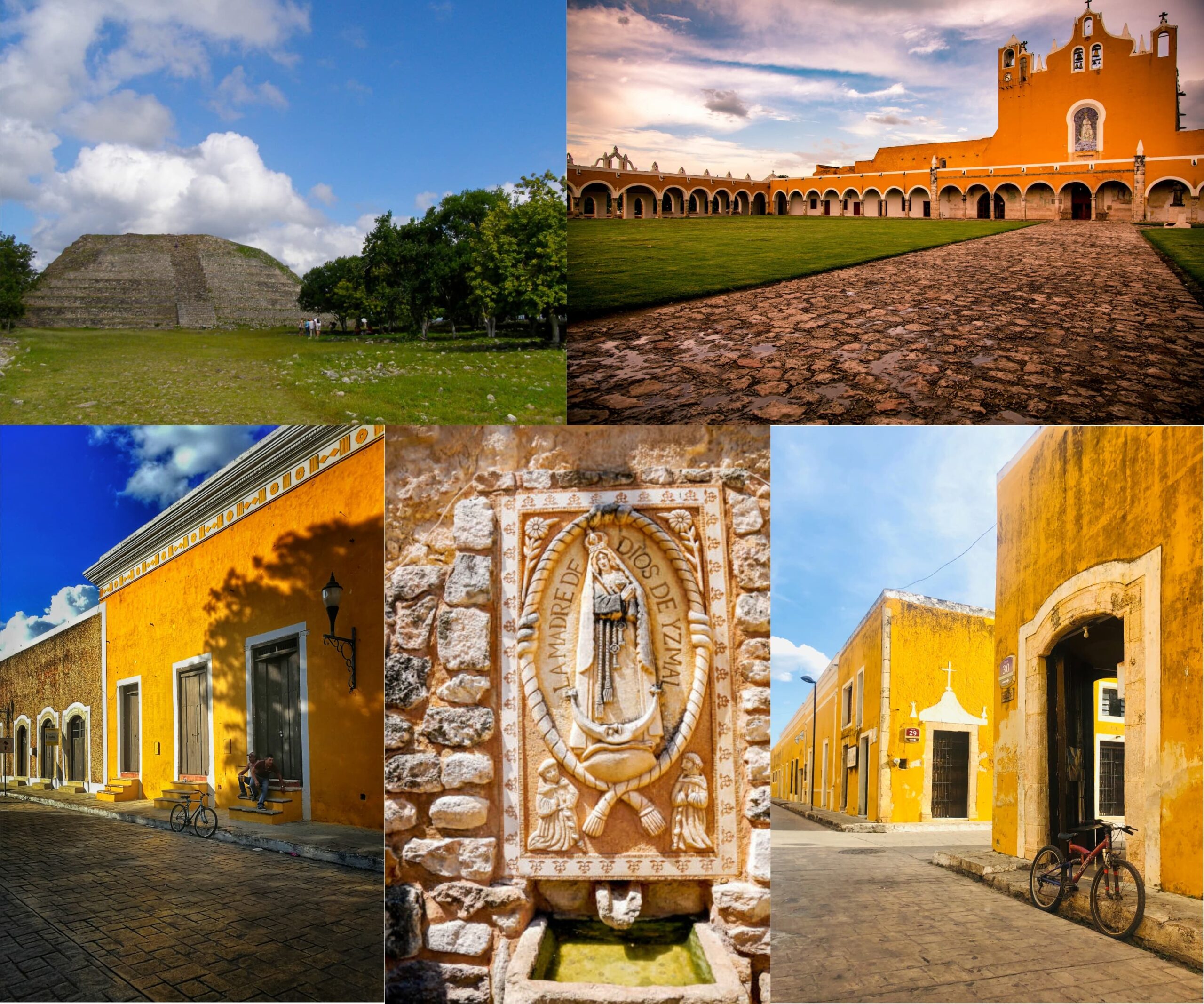Known as the City of the Three Cultures, today it is the essence of the cultural legacy of the Yucatecan people. On this site there are Mayan temples and colonial houses that transport you to the 16th, 17th and 18th centuries, and its people proudly display the cultural syncretism of the Mayan people.
Currently, most of its historic buildings and houses are painted yellow and white by the will of the authorities and residents, which maintains an image of elegance and charm from bygone eras that distinguish and define it with a stately air in the regional context.
In its neat patterned streets, horse-drawn carriages take the visitor on a charming tour through its squares, parks and its historic suburbs. At night, the city offers a unique experience, contemplating a starry celestial vault cut out by the profiles of its pyramids, temples and colonial mansions; shadows that seem to wake up from a sleep of centuries.
With its yellow and white buildings, which recall the colors of the flag of the Holy See, and its monastery dedicated to one of the pillars of the Franciscan Order, Saint Anthony of Padua, it is now the most important Marian center for Catholics. yucatecos
Convent of San Antonio de Padua
This is one of the most important and majestic buildings in Mesoamerica. It is located on the plateau of the city’s highest hill. It is climbed to it by means of three ramps built on its free sides. Inside the temple there is a beautiful Baroque-style altarpiece, covered with a gold bath.
Kinich Kakmó Pyramid
It means “Fire Macaw with Solar Face”. It is interpreted that the Maya believed that the god Kinich came down in the heat of the midday sun, to burn and therefore purify the sacrifices or offerings brought to the Mayan pantheon, using the shape of a macaw for this purpose. It is the largest in area in the Yucatan Peninsula and the third in Mexico after the Sol in Teotihuacán and Cholula in Puebla.
Thanks to its historical wealth and cultural significance, Izamal was declared in 2001 a Magical Town of Mexico.
